Somayag Series Successfully Completed!Bruce Johnson, Lisa Powers and the Somayag Committee |
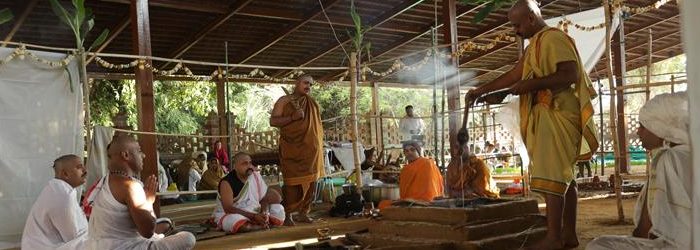 |
|
For the past ten years, a small group of dedicated people from various countries has held the vision of Shree Vasant Paranjpe of completing a series of seven Maha Somayags on the banks of the Narmada River in Maheshwar, Madhya Pradesh, India, for the healing of our planet. February 12th, 2017 marked the successful completion of the Aptoryam, the seventh and final Somayag in this series. Satsang applauds this achievement, and heartily thanks all who have helped to make this important work possible.
The Somayag releases powerful healing energies into the Earth’s atmosphere and beyond, the effects of which last for up to 100 years. All these Yajnyas are totally non-violent (Ahimsak). Vedas are the source of all knowledge. Vedas gift us the science of Yajnya (bio-energy) which has the power to heal much of the horrific effects of man’s inhumanity towards his fellow man and towards Nature, which is now reeling from poisons, pollution, violence and violation of every kind. |
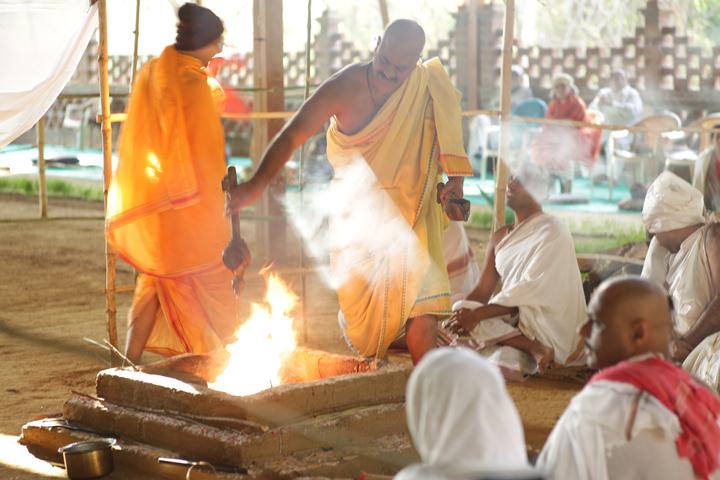 |
|
What is Somayag? AGNIHOTRA, tuned to the biorhythm of sunrise/sunset, is the basic YAJNYA which any person can perform with only a little effort. Agnihotra is to be performed DAILY at sunrise and sunset to keep the Nature’s cycles in harmony. |
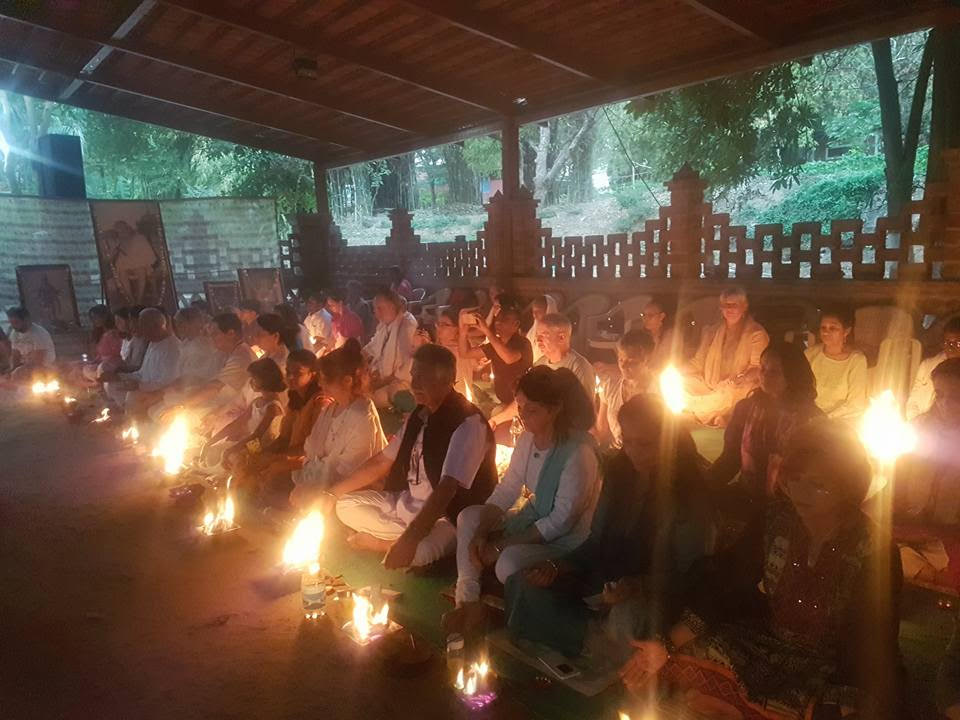 |
|
There are some special Yajnyas (HOMAS) like SOMAYAG, AGNISHTOMA, JYOTISHTOMA which are to be performed based on astronomic conditions. They are performed for purification of the environment, reducing the burden on the mind, making mind full of LOVE. In such Yajnyas chanting of Mantras and offerings to fire goes on for several days. At the junction of two seasons there is likelihood of epidemic. Hence, several medicinal HOMAS are prescribed with different sets of Mantras. Then there are special HOMAS for bringing rains, for producing a male child or a female child. This forms part of the science of Biogenetics. Somayag is one such special Yajnya. This normally lasts for six days. An intelligent young person would take about twelve years to learn this technique with proper Mantra chanting. The person has to follow strict disciplines. This Yajnya is called Somayag because juice from the herb Somavalli is used as the main oblation. Soma is known as the king of medicinal herbs. This special Yajnya provides an extra powerful boost of healing energy for the whole world. Countless positive benefits to a person, family and society are mentioned as an outcome of participating in, conducting and supporting Somayag. |
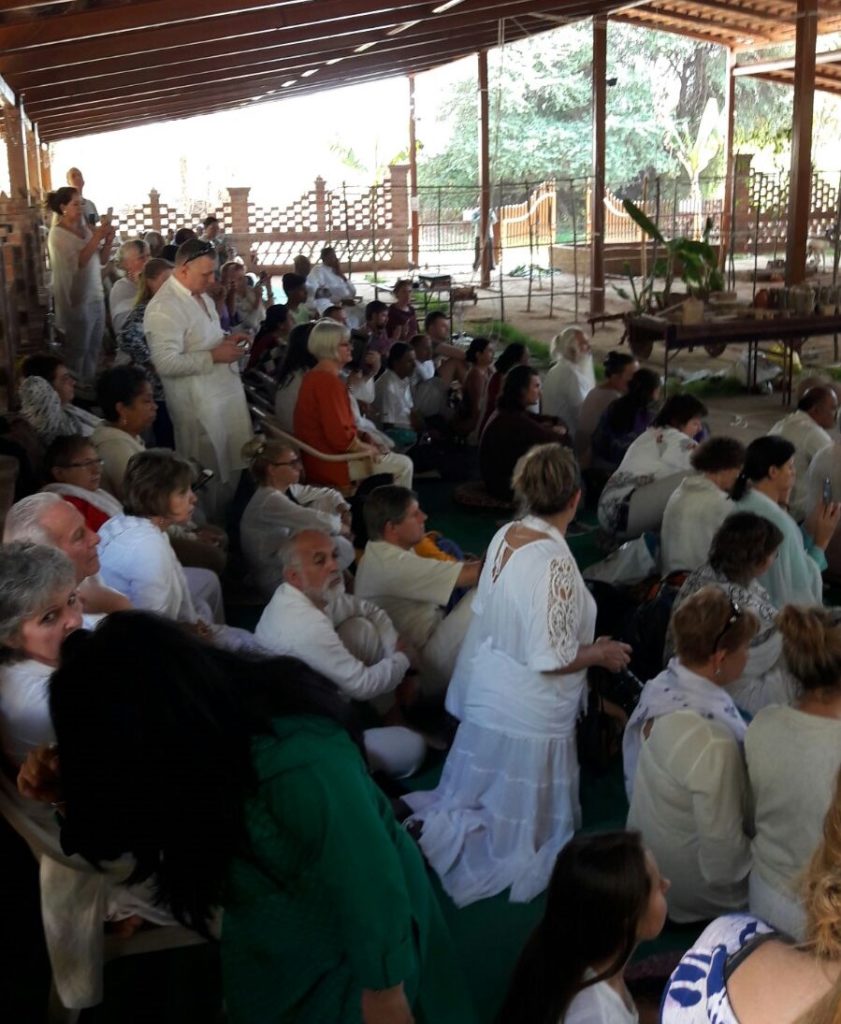 |
|
The primary seven Somayags are: There are many other Somayags, lasting from 6 days up to 12 years and more. The beneficial effect of each of these HOMAS lasts for several decades. The atmosphere becomes medicinal, nutritious and disease-free. Somayags yield a qualitative and quantitative improvement in the psyche. By using this supertechnology we can eradicate pollution factors on a large scale. The fumes emitted from the burning oblations in Yajnya serve as nucleus of clouds and rains. Smoke from the burning medicinal plants helps in the purification of the atmosphere and many disease-bearing germs are neutralized. Thus, a healthy ecosystem is created through Yajnya process. |
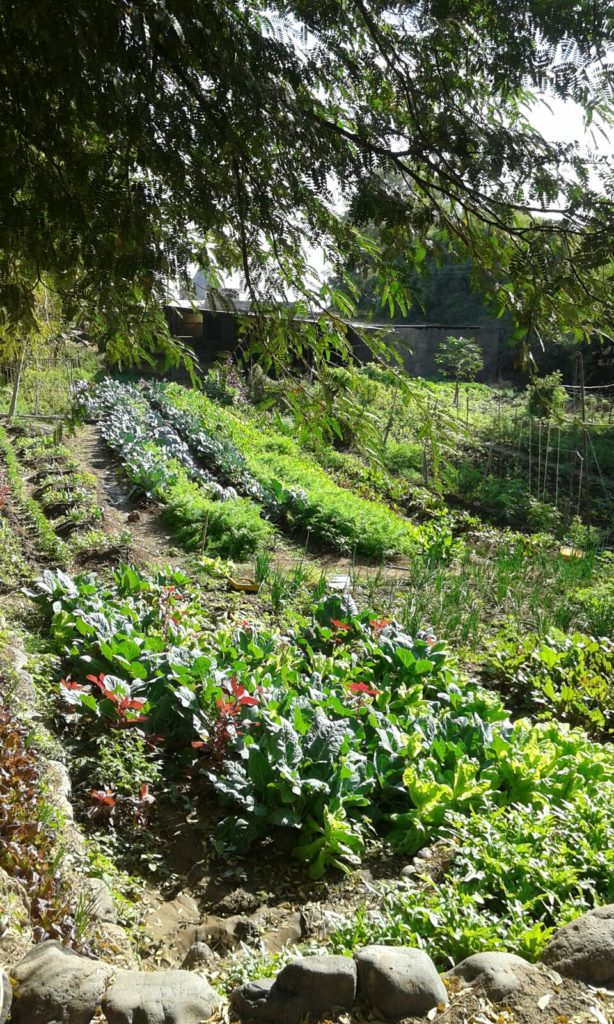 |
|
The Process of Somayag 2. Ishti fire. Ishti means whatever is inside us we offer to God. It is a basic requirement for the other steps of the Somayag. 3. Pravargya for three days. This is preparation for the Soma offering. 4. Soma offering. 5. Wrapping up–final offerings and prayers. 6. Bath in the Narmada River. The Yajaman The Yajaman represents the element of fire during a Somayag. Only someone who performs Tretagni Agnihotra regularly can become a Yajaman. He carries this Tretagni fire to the place where Somayag is to be performed and from this Tretagni fire the Somayag is started. |
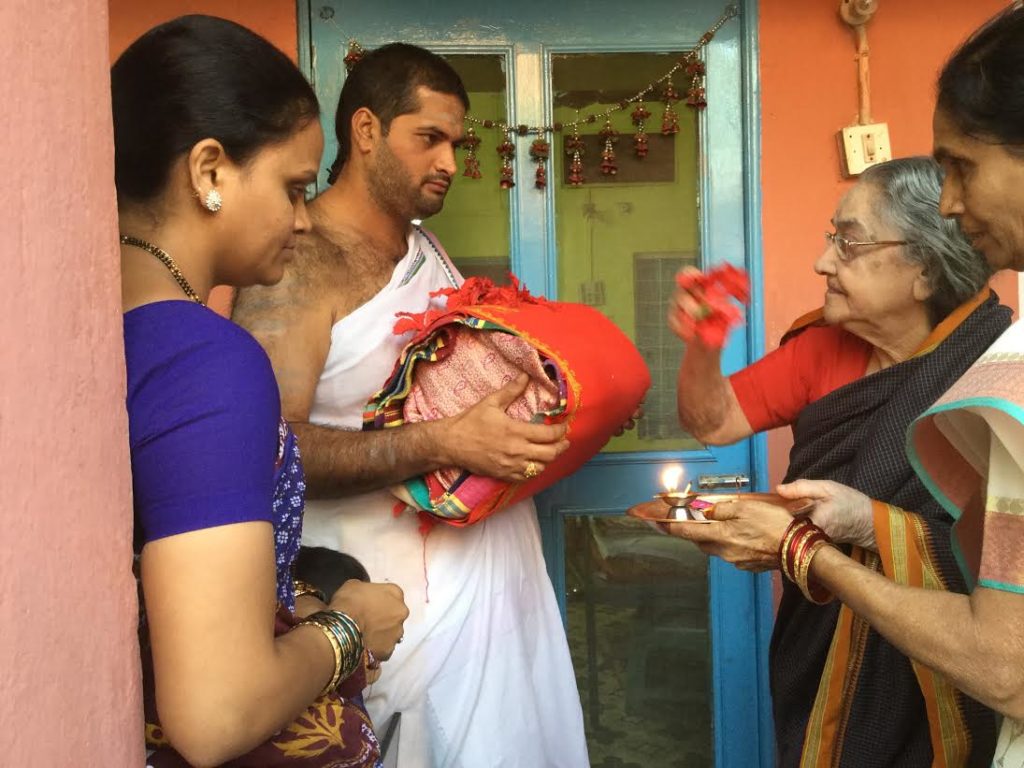 |
|
The Patni (wife of the Yajaman) is vital to the Somayag. The Yajaman must have a wife, and she is called upon at various points in the Somayag to be present for certain activities and often to touch and bless utensils which are used. The Patni is the only person who is given her own quarters in the Somayag shala. The Rutvijas (priests) |
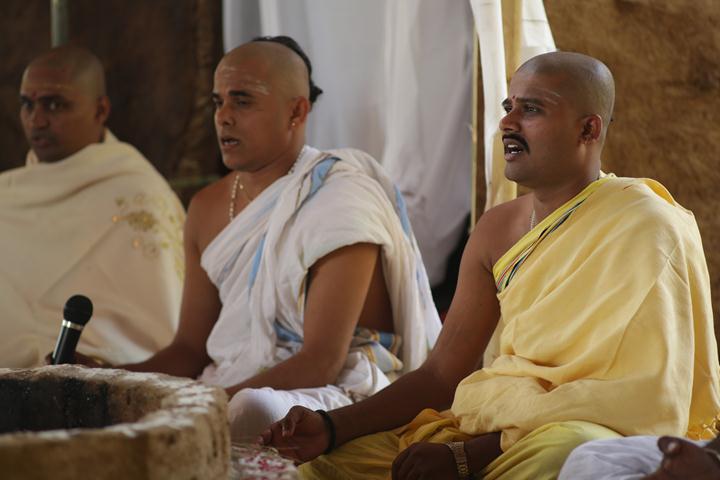 |
|
The sixteen consist of four chief priests and their assistants. |
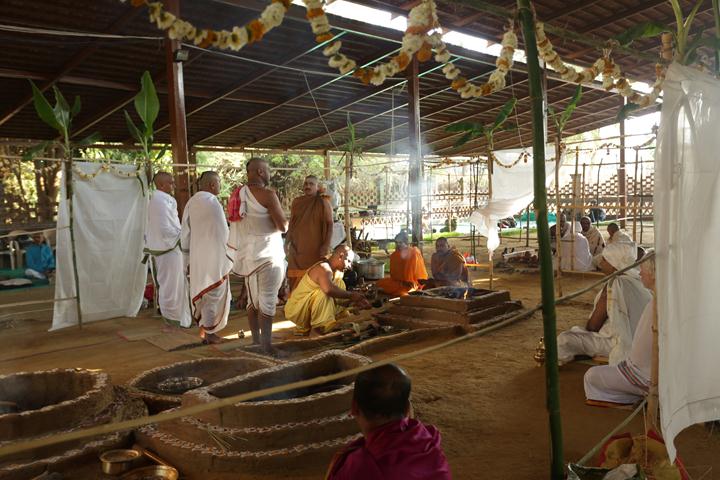 |
|
Creating Pure Fire Energy |
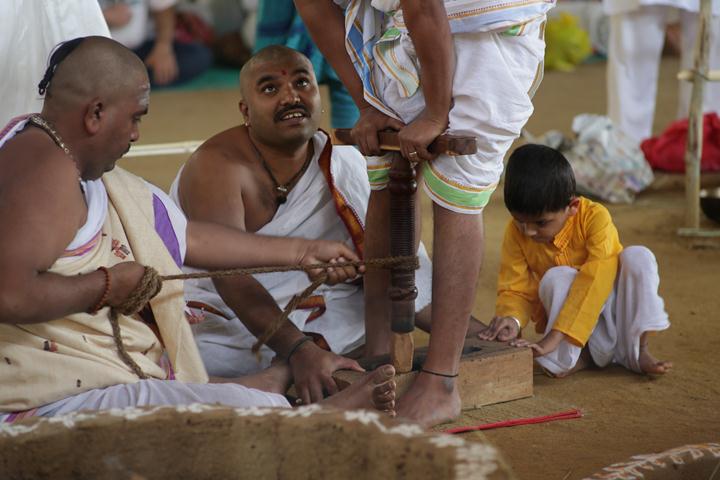 |
|
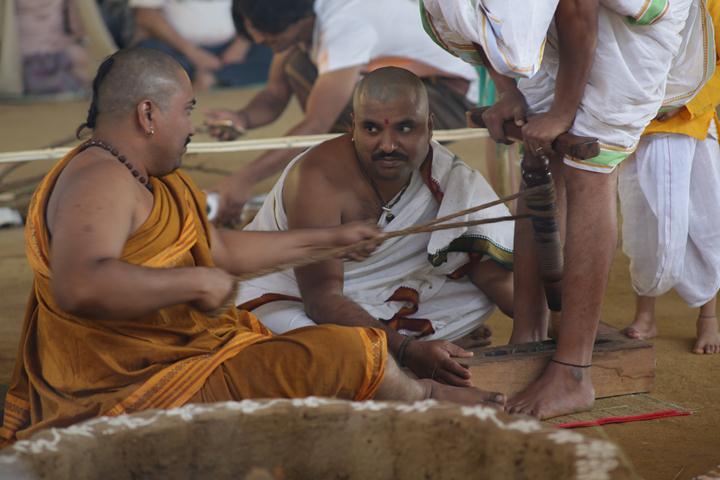 |
|
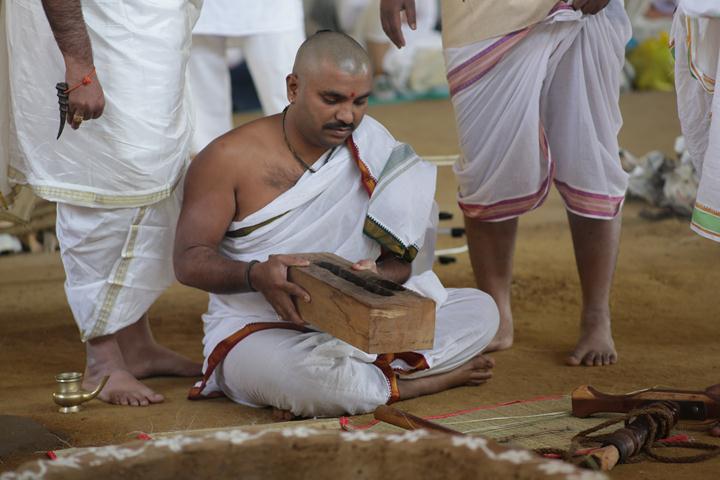 |
|
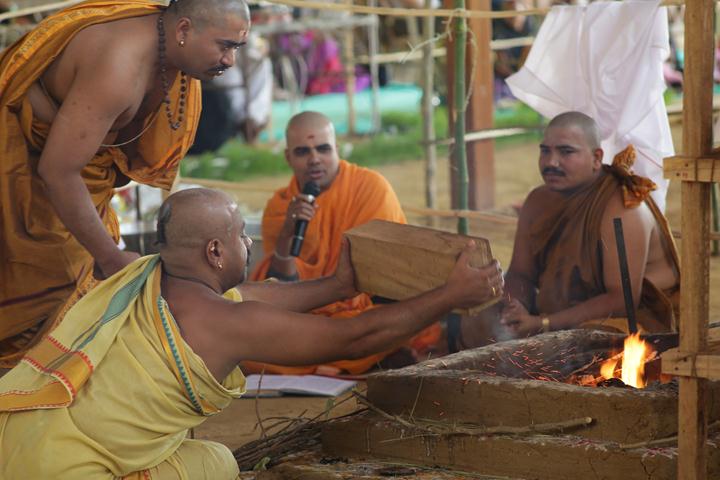 |
|
Pravargya in Somayag |
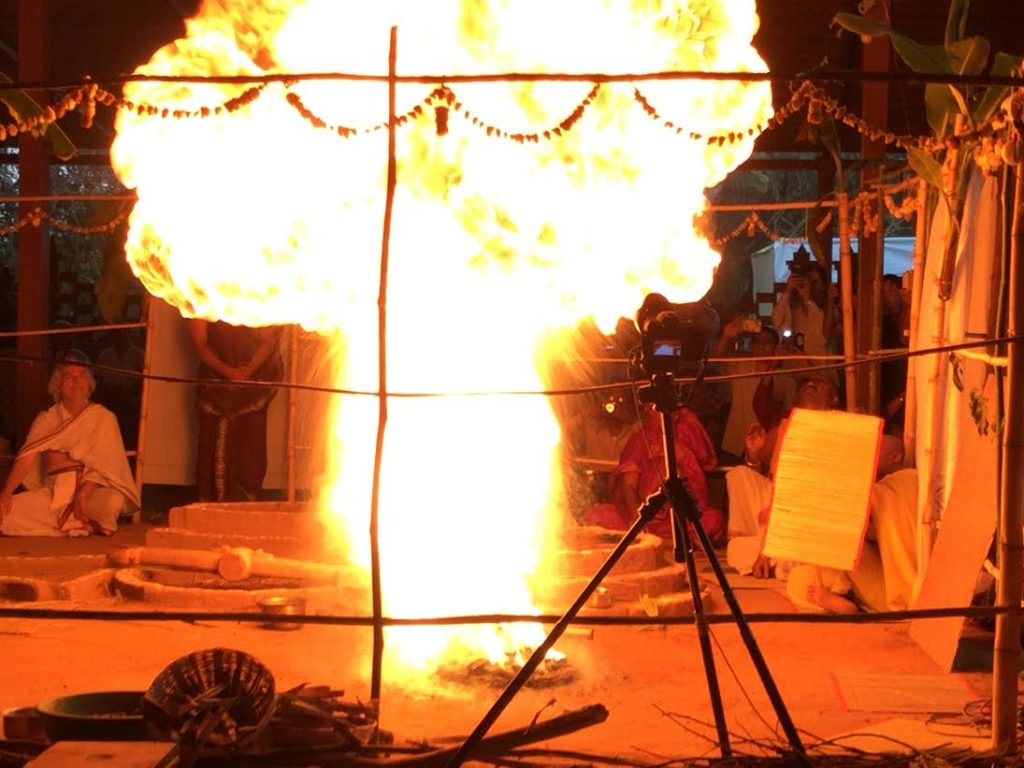 |
